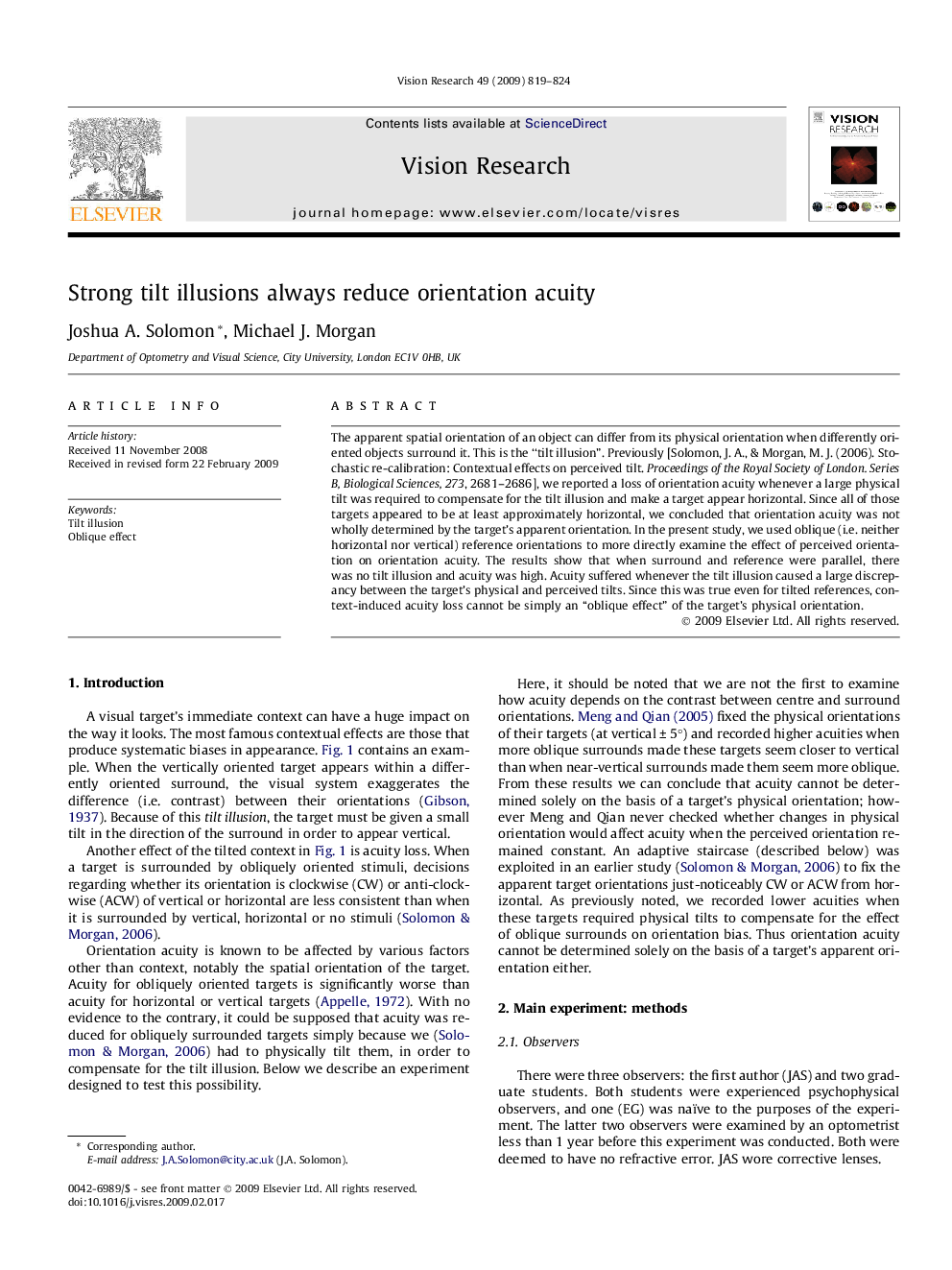| Article ID | Journal | Published Year | Pages | File Type |
|---|---|---|---|---|
| 4034793 | Vision Research | 2009 | 6 Pages |
The apparent spatial orientation of an object can differ from its physical orientation when differently oriented objects surround it. This is the “tilt illusion”. Previously [Solomon, J. A., & Morgan, M. J. (2006). Stochastic re-calibration: Contextual effects on perceived tilt. Proceedings of the Royal Society of London. Series B, Biological Sciences, 273, 2681–2686], we reported a loss of orientation acuity whenever a large physical tilt was required to compensate for the tilt illusion and make a target appear horizontal. Since all of those targets appeared to be at least approximately horizontal, we concluded that orientation acuity was not wholly determined by the target’s apparent orientation. In the present study, we used oblique (i.e. neither horizontal nor vertical) reference orientations to more directly examine the effect of perceived orientation on orientation acuity. The results show that when surround and reference were parallel, there was no tilt illusion and acuity was high. Acuity suffered whenever the tilt illusion caused a large discrepancy between the target’s physical and perceived tilts. Since this was true even for tilted references, context-induced acuity loss cannot be simply an “oblique effect” of the target’s physical orientation.
